Aplication for steemit learning challenge season-23 as steemit "nature observer" academy

The forest is a world full of mystery and beauty, behind the towering trees there are various kinds of wonders that are waiting for us to discover, from unique flora that can only grow in certain places to rare fauna that live in harmony, every corner of the forest holds an extraordinary story.
Fresh air filled with the aroma of leaves, the sound of splashing water from flowing rivers, and the melodious chirping of birds create a natural symphony that soothes the soul. Not only that, the forest is also home to various unique and beautiful species that we may have never seen before.
So far I have seen that on Steemit there are many users who share photography about animals, flowers and mushrooms, but most of them do not give the correct species name in the title of their post and even only mention "the beautiful insect", and in my personal opinion that is something is odd and needs to be corrected so that the Photography blog on steemit has high value and becomes a source of knowledge for people who are outside the platform.
I'm here to encourage people to observe nature around them and also want to teach people about how to detect species names, how to find them, and how to use them to make their blogs high quality, there are so many species out there. we can find when we explore the surrounding forests, but finding their names is not something that is easy, so I am here to share my experience with you all.
So if you want to get involved with us then the first thing you need to do is go to the forest around you to find and make observations of various species, and after that you can join other observers in naturalist to identify species names and make location of the observations you made, I really hope you can do it honestly so that the steemit blog that we publish gets the trust of people outside the platform.
How do you become a natural observer with us?
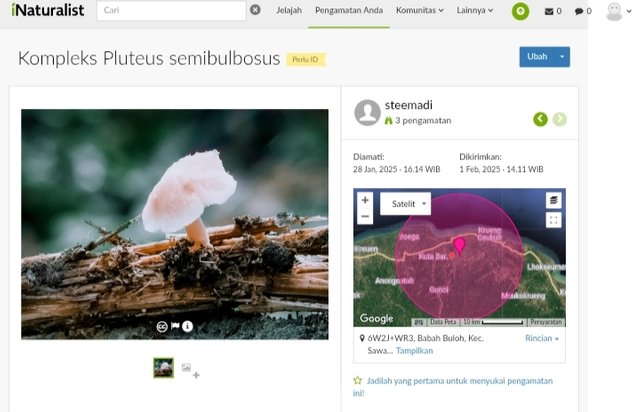
Screenshot
So far, many observers have identified various species that they have found, whether in the forest, in old buildings and even in the yard, here the observers are connected to each other to identify the results of their findings, apart from that, this step is also something that more concrete, for example you have to look for the appropriate species name, date of observation and location of the observation you made, so if you want to get involved with us then you need to go to the forest around you to observe various species.
and below I will make a sample observation post so that it is easier for you to understand and get involved.
| Latin Name | Observation date | Location |
|---|---|---|
| Pluteus semibulbosus | January 28 2025 | Sawang, Aceh, Indonesia |
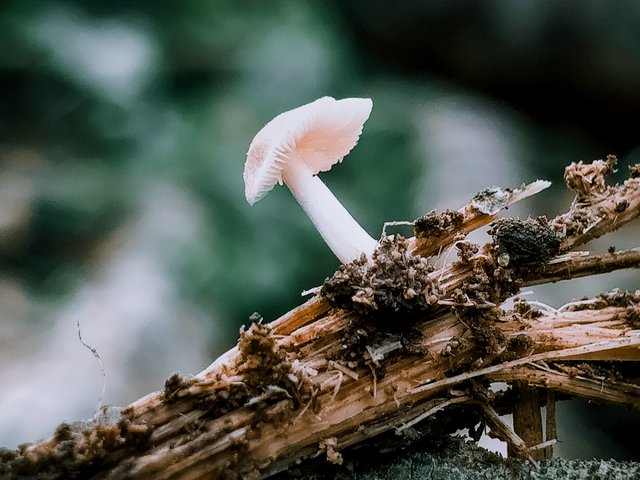
This is the Pluteus semibulbosus fungus which is a species of fungus from the genus Pluteus which is known as a fungus that lives in rotting wood. This fungal species belongs to the Pluteaceae family and is often found in tropical forests and also in temperate forests, like members of the Pluteus Additionally, this fungus is also saprophytic, which means it plays a role in the decomposition process of dead wood by helping break down organic matter into simpler elements.
Morphologically, Pluteus semibulbosus has a convex shaped cap and will be flat if the place where they grow is more humid. The color of the Pluteus semibulbosus cap varies from reddish white to brownish yellow with a smooth and slightly fibrous surface. One of the characteristic features of this fungus is the presence of a rather large stalk. At the base, the stalk or stem of the mushroom is white with a slightly creamy mixture, has a fibrous texture and often shows a slight discoloration when touched.
The bottom of the mushroom cap is covered with white gills when the mushroom is young, but then this color will change to pink as the spores mature, and this pink color is an indicator that this mushroom belongs to the genus pluteus which has a similar color, the spores of The pluteus semibulbosus is elliptical and smooth, and this can only be observed through a microscope to confirm further identification.
Ecologically, this fungus is easy to find in areas with high humidity, especially during the rainy season, this fungus grows solitary and there are also some findings that grow in groups and overall this fungus only grows on rotting dead wood, this fungus contributes to in the nutrient cycle in forest ecosystems because of their saprophytic nature, Pluteus semibulbosus are not parasitic, which means their presence does not pose a threat to living trees, they are only true decomposers that break down rotten wood.
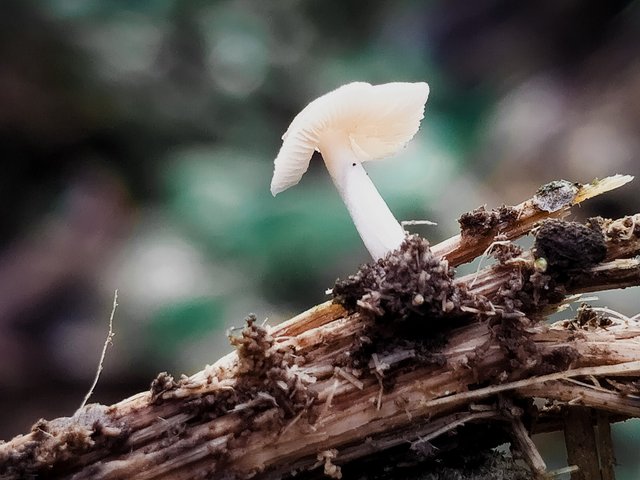
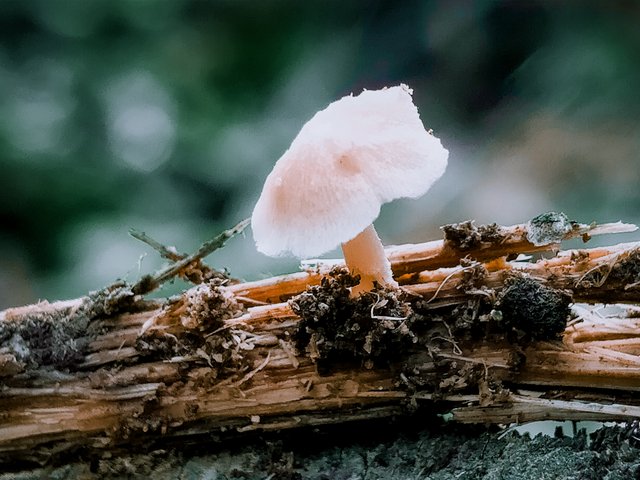
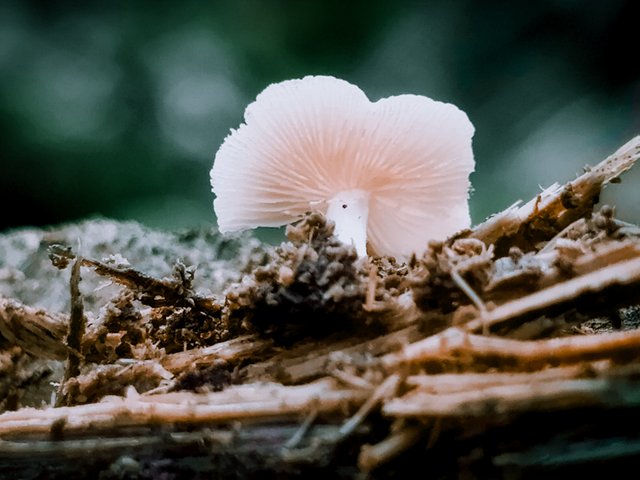
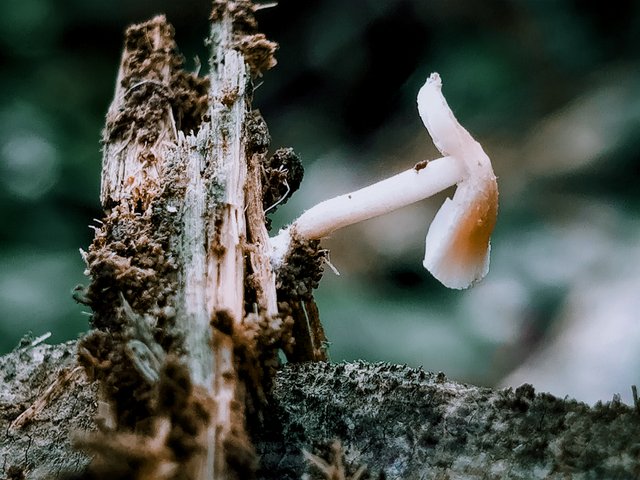
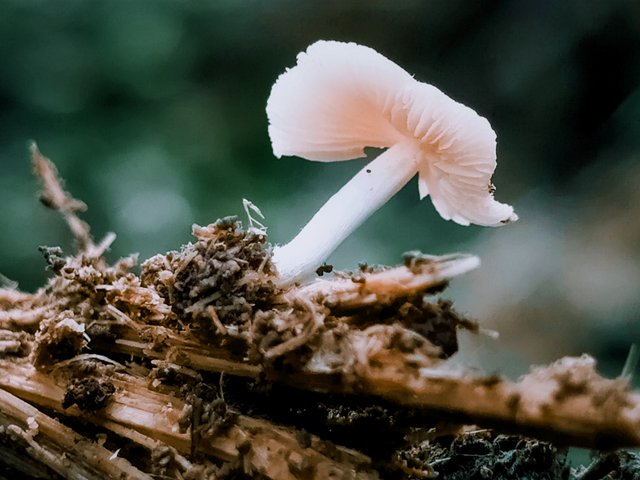
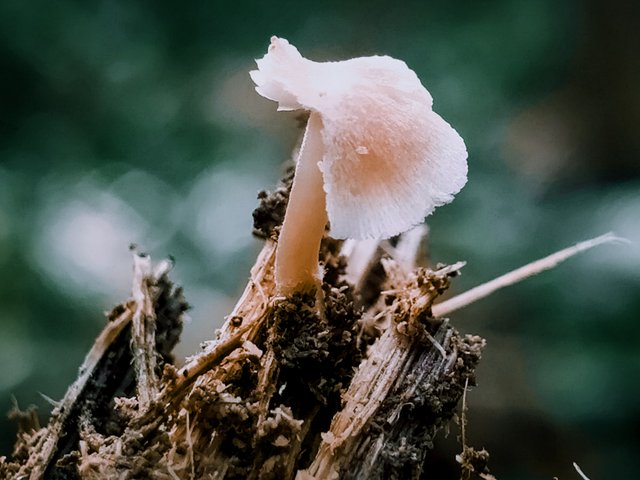
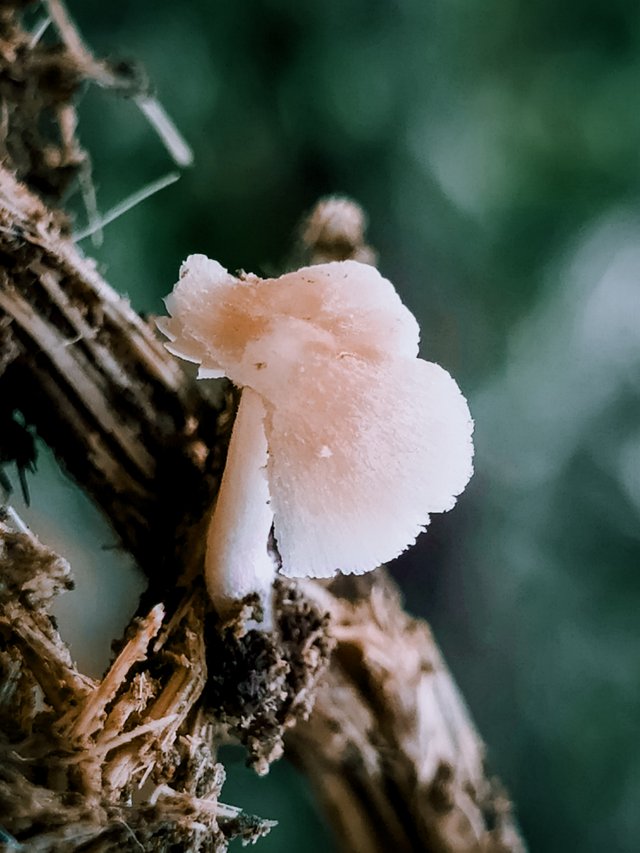
| Camera used | smartphone |
|---|---|
| Lens | - |
| Photography | Pluteus semibulbosus |
| Location | sawang |
| Photographer | @steemadi |
| Link to original | community |
|---|---|
| Link | https://www.inaturalist.org/observations/260233619 |
| Latitude Longitude | Map | |
|---|---|---|
| =5.20225 | =96.93205 | https://www.openstreetmap.org/?mlat=5.2022535284&mlon=96.9320511818 |
The following are practical tasks that can be done by anyone who wants to get involved with natural observations :
Week 1 : Mushroom & wild plant observation
mushroom & wild plant
You can choose one
Captured minimum 4 photos
homework:
identify species names at www.inaturalist.org
reviews for the mushrooms or wild plant you find in common & scientific language (min 450 word)
observation location clearly
share your social media (Twitter, Facebook and etc)
Week 2 : Insect & wild plants observation
Insect & wild plants observer
You can choose one
Pets are excluded
Captured minimum 4 photos of Insect or wild plants
homework:
identify species names at www.inaturalist.org
reviews for the Insect or wild plants you find in common & scientific language (min 450 word)
observation location clearly
share your social media (Twitter, Facebook and etc)
Week 3 : butterfly, caterpillar, bug, insect & wild plant observation
butterfly, caterpillar, bug, insect & wild plant observer
You can choose one
Pets are excluded
Captured minimum 4 photos
homework:
identify species names at www.inaturalist.org
reviews for the butterfly, caterpillar, bug, insect & wild plant you find in common & scientific language (min 450 word)
observation location clearly
share your social media (Twitter, Facebook and etc)
I will focus and read every assignment that you publish to us, plagiarism and AI texts are strictly prohibited, so make your own work, but if you have to and you have to take quotes to complete your post and have to take quotes from the internet, then quote from Wikipedia allowed (max 50 words) and provide sources at the end of the article.
Contact me on :
Discord: @celoteh.
Telegram : @nobitapop
Upvoted! Thank you for supporting witness @jswit.
Thank you for sharing on steem! I'm witness fuli, and I've given you a free upvote. If you'd like to support me, please consider voting at https://steemitwallet.com/~witnesses 🌟
Hi @steemadi,
I find your entry interesting but there's no forest around where I live and photographing fungus in winter will be hard and the same counts for bugs and butterflies.
There are countries, places where you can't find mushrooms unless you photograph what is sold in the shop, count what grows on spoiled bread, the walls if the roof above your head leaks (it's usually green) and what (French) cheese is made of.
It might be good to point out that there are apps with which flora and fauna can partly be traced. I say partly since I noticed more than once that these apps frequently show 6 options and still what I shows on my photo isn't between those six.
I do agree with you that it would be a good thing if we try to add a name to what we post. I would also be interested in not only hearing the Latin name but also the common name people give to it (this can also be interesting since behind these names can lie stories/anecdotes too).
I wonder about:
@cryptopie what do you think about joining a club of nature photographers? You and I can not go out in the forest, can we join taking macro photo's?
please to the point, what would you recommend?
Remove the word forest - your less9ns are examples or? I believe the idea is to just let people do their entry and you reply, advice as a club memtor. There are 2 different ways of teaching. Plants or bugs must be possible no matter where we are
Thanks & agreed with you 💯
Edited!